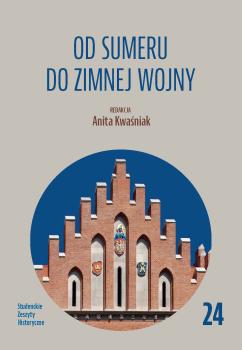Rok 355 i uzurpacja Sylwana w Galii .......... 47
Synopsis
YEAR 355 AND THE USURPATION OF SILVANUS IN GAUL
The article deals with the little-known rebellion of Silvanus in Gaul, an infantry commander of Frankish origin. It took place in Cologne in August 355 and lasted 28 days. This revolt is particularly interesting due to its course, but it has not been properly described in Polish historiography to this day. Augustus Silvanus has been forgotten because during the last eleven years of the reign of Emperor Constantius II (337- 361) as many as six usurpers appeared. Given such a large number of usurpations, the most dangerous for the empire lasting three years (the usurpation of Magnentius and Decentius), the short episode of Silvanus seems to be nothing serious. For the same reason, only one account by Ammianus Marcellinus has survived, describing the rebellion in Cologne in detail. Emperor Constantius II defeated all usurpers in civil wars except the last one – his nephew Julian II the Apostate. The latter only succeeded in this because Constantius II died unexpectedly and legitimized his rule on his deathbed. The aim of this article is to introduce the little-known Silvanus rebellion to the Polish reader. The causes, course, and effects of this event and the character of the usurper, including his ethnic origin and the armed forces at his disposal, have been analyzed. An attempt has been made to distinguish the factors that led to the usurpation in this region in the last decade of the reign of Emperor Constantius II. The source texts have been adopted as the basis – primarily the account written by Ammianus Marcellinus, an eyewitness and participant in the usurpation of Silvanus and the greatest historian of late antiquity.





